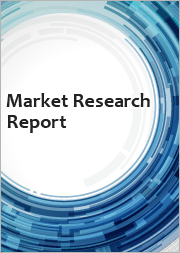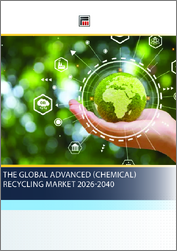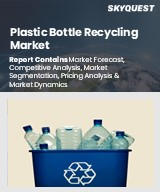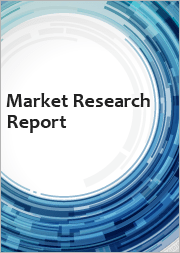
|
시장보고서
상품코드
1807981
용제 기반 플라스틱 재활용 시장 : 폴리머의 유형, 공급원, 기술, 최종 용도 산업별 - 세계 예측(2025-2030년)Solvent-based Plastic Recycling Market by Polymer Type, Feedstock Source, Technology, End-Use Industry - Global Forecast 2025-2030 |
||||||
용제 기반 플라스틱 재활용 시장은 2024년에는 5억 9,344만 달러에 달하며, 2025년에는 6억 3,077만 달러, CAGR 6.47%로 성장하며, 2030년에는 8억 6,453만 달러에 달할 것으로 예측됩니다.
| 주요 시장 통계 | |
|---|---|
| 기준연도 2024 | 5억 9,344만 달러 |
| 추정연도 2025 | 6억 3,077만 달러 |
| 예측연도 2030 | 8억 6,453만 달러 |
| CAGR(%) | 6.47% |
산업을 넘어선 순환 경제를 촉진하고 지속가능한 자원 관리의 초석으로서 용제형 플라스틱 재활용을 탐구
최근 지속가능한 재료 관리의 추구로 인해 기계적 파쇄나 재처리를 넘어선 첨단 재활용 기술을 모색하고 있습니다. 용매 기반 플라스틱 재활용은 분자 구조의 열화를 최소화하면서 고순도 고분자 분획을 회수하는 선택적 용해 공정을 활용하는 유망 접근법으로 부상하고 있습니다.
혁신적인 기술 혁신과 진화하는 정책 프레임워크가 전 세계 용제 기반 플라스틱 재활용의 상황을 형성
지난 10년간 용매 선택, 공정 최적화, 용매 회수 기술 발전은 화학물질 재활용의 실현 가능성에 혁명을 일으켰습니다. 연구진은 에너지 소비를 줄이고 환경에 미치는 영향을 줄이면서 선택적 용해를 실현하는 새로운 용매를 확인했으며, 폐쇄 루프 용매 회수 시스템의 혁신으로 공정의 경제성을 향상시켰습니다.
2025년 미국 관세 조치가 공급망과 용제 기반 플라스틱 재활용의 실행 가능성에 미치는 지역 간 누적 영향 분석
미국이 2025년 새로운 관세 조치를 시행할 준비를 하고 있는 가운데, 솔벤트 기반 재활용 부문은 수입 비용과 공급망 역학 변화에 대비하고 있습니다. 이러한 관세는 국내 화학업체를 보호하고 육상 가공을 촉진하기 위한 것으로, 수입 용제 및 부속 장비의 비용 구조를 바꾸게 될 것입니다.
고분자 원료 기술 및 최종 사용 산업 분류를 심층적으로 분석하여 용제 기반 플라스틱 재활용의 새로운 기회를 발견할 수 있습니다.
폴리머의 유형로 볼 때, 용매 기반 재활용 시장은 폴리에틸렌, 폴리에틸렌 테레프탈레이트, 폴리프로필렌, 폴리스티렌, 폴리스티렌, 폴리염화비닐의 각기 다른 용해도 특성에 대응해야 하며, 각각에 적합한 용매 시스템과 분리 프로토콜이 필요합니다. 선택적 용해를 통해 폴리에틸렌 테레프탈레이트는 최소한의 용해 중합으로 회수할 수 있으며, 특수 공정을 통해 폴리염화비닐과 같은 고난이도 폴리머를 정제할 수 있습니다.
솔벤트 기반 재활용 북미, 유럽, 중동 및 아프리카, 아시아태평양 동향 및 성장 요인 분석
북미와 남미에서는 연방정부의 재활용 의무화와 탄탄한 인프라 투자의 시너지 효과로 인해 용제 기반 재활용 프로젝트 개발이 촉진되고 있습니다. 지역 물류 및 폐기물 수거의 발전으로 화학 재활용 업체들의 원료 접근성이 향상되고 있으며, 민관 구상은 실증 플랜트 및 스케일업 테스트를 지원하고 있습니다.
솔벤트 기반 플라스틱 재활용의 혁신과 운영 우수성, 전략적 파트너십을 추진하는 주요 이해관계자들에 대한 인사이트 분석
용제 기반 플라스틱 재활용 분야의 선도 기업은 독자적인 용제 화학 물질, 통합 재활용 플랫폼, 폴리머 제조업체와의 전략적 제휴를 통해 두각을 보이고 있습니다. 각 업체들은 용제 회수 효율을 높이고, 에너지 소비를 줄이고, 발전하는 수요에 대응하기 위해 생산 능력을 확대하기 위한 연구개발에 투자하고 있습니다.
채택을 촉진하기 위한 전략적 로드맵 및 전술적 제안 용제 기반 재활용의 성능 향상과 지속가능성 통합을 위한 전략적 로드맵과 전술적 제안
업계 리더들은 경제성 및 운영 조건에서 성능 보증을 입증하는 확장 가능한 시험적 배포를 우선순위에 두어야 합니다. 용제 기반 재활용 구상을 기업의 지속가능성 목표와 일치시킴으로써 조직은 경영진의 지지를 확보하고 기술 확장을 위한 투자를 유치할 수 있습니다.
지속가능한 순환 경제로의 전환을 위해 용제 기반 플라스틱 재활용을 촉진하기 위한 중요한 발견과 향후 방향에 대한 요약 정리
용제 기반 플라스틱 재활용을 조사한 결과, 기술 혁신, 진화하는 규제 상황, 전략적 협력으로 특징지어지는 상황을 확인할 수 있었습니다. 세분화의 역동성과 지역적 차이를 분석함으로써 이해관계자들은 고급 재활용 솔루션을 구현할 수 있는 표적화된 기회를 파악할 수 있습니다.
목차
제1장 서문
제2장 조사 방법
제3장 개요
제4장 시장 개요
제5장 시장 역학
제6장 시장 인사이트
- Porter's Five Forces 분석
- PESTEL 분석
제7장 미국 관세의 누적 영향 2025
제8장 용제 기반 플라스틱 재활용 시장 : 폴리머 유형별
- 폴리에틸렌
- 폴리에틸렌 테레프탈레이트
- 폴리프로필렌
- 폴리스티렌
- 폴리염화비닐
제9장 용제 기반 플라스틱 재활용 시장 : 원료원별
- 포스트 컨슈머
- 식품 용기
- 가정용 포장
- 다층 필름
- 섬유 제품
- 포스트 인더스트리얼
제10장 용제 기반 플라스틱 재활용 시장 : 기술별
- 용해 침전
- 용매 추출 탈랍
제11장 용제 기반 플라스틱 재활용 시장 : 최종 용도 산업별
- 자동차
- 건축·건설
- 가전
- 헬스케어
- 산업 제품
- 포장
- 섬유
제12장 아메리카의 용제 기반 플라스틱 재활용 시장
- 미국
- 캐나다
- 멕시코
- 브라질
- 아르헨티나
제13장 유럽, 중동 및 아프리카의 용제 기반 플라스틱 재활용 시장
- 영국
- 독일
- 프랑스
- 러시아
- 이탈리아
- 스페인
- 아랍에미리트
- 사우디아라비아
- 남아프리카공화국
- 덴마크
- 네덜란드
- 카타르
- 핀란드
- 스웨덴
- 나이지리아
- 이집트
- 튀르키예
- 이스라엘
- 노르웨이
- 폴란드
- 스위스
제14장 아시아태평양의 용제 기반 플라스틱 재활용 시장
- 중국
- 인도
- 일본
- 호주
- 한국
- 인도네시아
- 태국
- 필리핀
- 말레이시아
- 싱가포르
- 베트남
- 대만
제15장 경쟁 구도
- 시장 점유율 분석, 2024
- FPNV 포지셔닝 매트릭스, 2024
- 경쟁 분석
- Alpla Werke Alwin Lehner GmbH & Co KG.
- Borealis AG
- Cleanaway Waste Management Limited.
- COL&BRI PARTNERS, S.L.
- CreaCycle GmbH
- Eastman Chemical Company
- Fraunhofer-UMSICHT
- KW Plastics
- Loop Industries
- LyondellBasell Industries N.V.
- Mura Technology
- PureCycle Technologies, Inc.
- RE&UP Technologies Holding B.V.
- ReSolved Technologies BV
- Saperatec GmbH
- Solvay S.A.
- Sulzer Ltd
- Trinseo PLC
- Viva Energy
제16장 리서치 AI
제17장 리서치 통계
제18장 리서치 컨택
제19장 리서치 기사
제20장 부록
KSA 25.09.16The Solvent-based Plastic Recycling Market was valued at USD 593.44 million in 2024 and is projected to grow to USD 630.77 million in 2025, with a CAGR of 6.47%, reaching USD 864.53 million by 2030.
| KEY MARKET STATISTICS | |
|---|---|
| Base Year [2024] | USD 593.44 million |
| Estimated Year [2025] | USD 630.77 million |
| Forecast Year [2030] | USD 864.53 million |
| CAGR (%) | 6.47% |
Exploring Solvent-Based Plastic Recycling as a Cornerstone for Circular Economy Advancement and Sustainable Resource Management Across Industries
In recent years the pursuit of sustainable materials management has driven the exploration of advanced recycling technologies that go beyond mechanical shredding and reprocessing. Solvent-based plastic recycling has emerged as a promising approach, harnessing selective dissolution processes to recover high-purity polymer fractions while minimizing degradation of molecular structure.
By dissolving mixed plastic streams in targeted solvents, chemical contaminants and additives can be separated effectively, yielding reclaimed polymers that match the performance of virgin materials. This precision in polymer recovery addresses the limitations of traditional mechanical recycling, especially for multilayer films and heavily pigmented materials.
Furthermore, solvent-based techniques offer the flexibility to process diverse polymer types, including polyethylene, polyethylene terephthalate, polypropylene, polystyrene, and polyvinyl chloride, each of which poses unique challenges for conventional recycling methods. The result is a higher quality recycled output that can re-enter high-value applications.
As industries increasingly align with circular economy principles, integrating solvent-based recycling into existing value chains presents an opportunity to reduce reliance on fossil-derived feedstocks and to extend the lifespan of plastic materials. This executive summary provides a concise yet comprehensive exploration of the transformative forces, regulatory influences, market segmentation dynamics, regional variances, and strategic recommendations shaping the solvent-based plastic recycling landscape.
Unveiling the Revolutionary Technological Innovations and Evolving Policy Frameworks Reshaping the Solvent-Based Plastic Recycling Landscape Worldwide
Over the past decade, technological advancements in solvent selection, process optimization, and solvent recovery have revolutionized the feasibility of chemical recycling. Researchers have identified novel solvents that achieve selective dissolution with lower energy consumption and reduced environmental impact, while innovations in closed-loop solvent recovery systems enhance process economics.
Simultaneously, policy developments worldwide are accelerating the adoption of solvent-based recycling. Extended producer responsibility regulations, higher recycling targets, and restrictions on landfill disposal are creating a favorable environment for investment in chemical recycling infrastructure. Several jurisdictions have introduced incentives for reclaiming hard-to-recycle plastics.
In parallel, leading manufacturers in the automotive, packaging, and consumer electronics sectors are forging strategic partnerships with technology providers to pilot solvent-based recycling projects. These collaborations are demonstrating the scalability of the technology under real-world conditions, validating product performance, and building the confidence of end users.
Moreover, environmental, social, and governance commitments have pressured stakeholders to seek recycling methods that can handle complex plastic waste streams. Consequently, solvent-based techniques are being integrated into corporate sustainability roadmaps as a critical component of circular material strategies.
Collectively, these technological breakthroughs and evolving policy frameworks are reshaping the solvent-based plastic recycling landscape and unlocking new pathways for resource recovery.
Analyzing How the 2025 United States Tariff Measures Are Cumulatively Influencing Supply Chains and Viability in Solvent-Based Plastic Recycling Across Regions
As the United States prepares to implement new tariff measures in 2025, the solvent-based recycling sector is bracing for shifts in import costs and supply chain dynamics. These tariffs, designed to protect domestic chemical producers and foster onshore processing, will alter the cost structure for imported solvents and ancillary equipment.
Subsequently, stakeholders that rely on international suppliers for specialized solvents or machinery may experience higher input prices, prompting them to reassess vendor relationships and consider domestic sourcing strategies. Meanwhile, technology providers are exploring local manufacturing partnerships to mitigate tariff impacts and preserve competitive positioning.
The imposition of import duties on certain polymer grades will also influence feedstock flows, with post-industrial and post-consumer waste streams potentially redirected to new processing hubs. This redistribution may create opportunities for regional recycling facilities but could strain existing logistic networks if capacity fails to align with evolving demand.
Furthermore, tariff-driven cost differentials are spurring conversations about strategic stockpiling, contract renegotiations, and long-term supply agreements. Industry leaders are evaluating procurement strategies to ensure continuity of operations and to safeguard profit margins during the transition.
In essence, the 2025 United States tariff measures will have a cascading effect on solvent-based plastic recycling, reshaping supplier relationships, investment decisions, and regional processing landscapes.
Deep Dive into Polymer Feedstock Technology and End-Use Industry Segmentation Unveiling Nuanced Opportunities in Solvent-Based Plastic Recycling
In terms of polymer type, the solvent-based recycling market must address the distinct solubility characteristics of polyethylene, polyethylene terephthalate, polypropylene, polystyrene, and polyvinyl chloride, each requiring tailored solvent systems and separation protocols. Through selective dissolution, polyethylene terephthalate can be recovered with minimal depolymerization, while specialized processes enable the purification of more challenging polymers such as polyvinyl chloride.
Similarly for feedstock source, both post-consumer and post-industrial plastic streams present unique considerations. Post-consumer materials including food containers, household packaging, multilayer films, and textiles and fibers necessitate rigorous contaminant removal, whereas cleaner post-industrial waste offers a more consistent feedstock conducive to streamlined solvent-based processing.
Technological segmentation reveals two primary process routes: dissolution precipitation and solvent extraction dewaxing. Dissolution precipitation is favored for its ability to isolate target polymers with high purity, and solvent extraction dewaxing provides an efficient method for removing low-molecular-weight impurities and additives, enhancing the overall recyclate quality.
Finally, the end-use industry landscape spans automotive, building and construction, consumer electronics, healthcare, industrial goods, packaging, and textiles. Each sector demands recycled polymers that meet stringent performance criteria, driving continuous innovation in solvent-based processing to satisfy application-specific requirements.
Examining the Regional Dynamics and Growth Drivers Spanning the Americas Europe Middle East Africa and Asia-Pacific in Solvent-Based Recycling
In the Americas, the synergy between federal recycling mandates and robust infrastructure investment is fostering the deployment of solvent-based recycling projects. Advancements in regional logistics and waste collection are enhancing feedstock accessibility for chemical recyclers, while public-private initiatives are supporting demonstration plants and scale-up trials.
Throughout Europe Middle East and Africa, stringent environmental regulations coupled with ambitious circular economy targets are accelerating the integration of solvent-based solutions. Collaborative research consortia and industry alliances are facilitating cross-border technology transfers, and local pilot facilities are validating process viability across varied waste streams.
In the Asia-Pacific region, burgeoning plastic consumption and increasing landfill constraints are driving governments and corporations to explore advanced recycling methods. Investment in solvent-based recycling is rising, supported by technological partnerships between established chemical producers and emerging recyclers, aiming to address the growing volumes of multilayer films and mixed plastic packaging.
Each regional landscape presents distinct challenges and growth drivers, from regulatory incentives and infrastructure readiness to feedstock availability and stakeholder collaboration. Understanding these dynamics is essential for stakeholders seeking to optimize market entry and expansion strategies.
Insightful Analysis of Leading Stakeholders Driving Innovation Operational Excellence and Strategic Partnerships in Solvent-Based Plastic Recycling
Leading players in the solvent-based plastic recycling arena are distinguished by their proprietary solvent chemistries, integrated recycling platforms, and strategic alliances with polymer manufacturers. Companies are investing in research and development to refine solvent recovery efficiency, reduce energy consumption, and scale production capacities to meet evolving demand.
Several enterprises have established pilot facilities in collaboration with automotive OEMs and packaging firms, validating recycled material performance in high-stress applications. These joint ventures facilitate knowledge sharing, accelerate technology maturation, and build confidence among end users regarding the reliability of recycled feedstocks.
Partnerships between chemical companies and waste management firms are enabling end-to-end process integration, from feedstock sourcing and pretreatment to solvent recovery and polymer pelletization. Such vertically coordinated models enhance traceability and reduce operational risk, supporting the creation of closed-loop supply chains.
Furthermore, emerging technology providers are differentiating themselves through modular and containerized recycling units, which accelerate deployment timelines and enable flexible scaling. By addressing both large-scale industrial projects and decentralized community-level applications, these innovators are broadening the adoption potential of solvent-based recycling solutions.
Collectively, these stakeholder strategies underscore the critical role of collaboration, technological leadership, and operational excellence in driving the next wave of growth for solvent-based plastic recycling.
Strategic Roadmap and Tactical Recommendations to Drive Adoption Elevate Performance and Embed Sustainability in Solvent-Based Recycling
Industry leaders must prioritize scalable pilot deployments that demonstrate economic viability and performance assurances under operational conditions. By aligning solvent-based recycling initiatives with corporate sustainability goals, organizations can secure executive support and attract investment for technology scale-up.
Investment in joint research programs with academic institutions and technology partners will expedite development of next-generation solvent systems that minimize environmental footprint while maximizing polymer recovery rates. Shared intellectual property frameworks can foster innovation without compromising competitive advantage.
Stakeholders should also engage with policymakers to shape supportive regulations that acknowledge the environmental benefits of chemical recycling. Clear standards for recycled polymer quality and transparent certification schemes will bolster market confidence and stimulate demand from end-use industries.
Moreover, integration of digital traceability technologies, such as material passports and blockchain-enabled tracking, can enhance feedstock quality control and verify the provenance of recycled products. These systems strengthen supply chain transparency and reinforce stakeholder accountability.
Finally, cross-sector collaboration among plastic producers, recyclers, and end users is essential to develop design-for-recycling guidelines and to optimize product formulations for solvent-based processing. Such concerted efforts will lay the foundation for a truly circular plastics economy.
This study is based on a blend of primary and secondary research methodologies, encompassing structured interviews with industry experts, site visits to demonstration plants, and consultations with regulatory agencies. These interactions provided nuanced insights into operational challenges and technological capabilities across the value chain.
Supplementing primary data, a comprehensive review of technical journals, patent filings, and conference proceedings informed the evaluation of emerging solvent chemistries and process innovations. Cross-referencing these findings with industry reports and government publications ensured a robust contextual framework.
Quantitative supply chain mapping was performed to trace feedstock flows from collection points through pretreatment, solvent-based processing, and recycled polymer distribution. This approach illuminated bottlenecks and highlighted opportunities for logistical optimization.
Analytical modeling of energy consumption, solvent recovery rates, and material purity levels served to benchmark leading technologies and identify performance thresholds. Sensitivity analyses were conducted to assess the impact of key variables such as feedstock contamination and solvent regeneration efficiency.
Finally, all data and insights underwent rigorous validation through peer review and expert panel consultations, ensuring the reliability and relevance of the research findings presented in this report.
Summarizing Key Findings Implications and Future Directions for Advancing Solvent-Based Plastic Recycling toward a Sustainable Circular Economy Transition
The exploration of solvent-based plastic recycling reveals a landscape marked by technological innovation, evolving regulatory support, and strategic collaboration. By dissecting segmentation dynamics and regional variations, stakeholders can identify targeted opportunities to implement advanced recycling solutions.
The analysis of tariff impacts underscores the importance of agile supply chain strategies and localized production models to mitigate cost fluctuations and maintain competitiveness. Similarly, insights into leading companies highlight best practices in partnership development and process integration.
Actionable recommendations emphasize the need for coordinated investment in R&D, supportive policy frameworks, and digital traceability systems to reinforce material circularity. These elements collectively strengthen the foundation for sustainable plastic reuse and contribution to a low-carbon economy.
Looking ahead, ongoing advancements in solvent chemistry, process automation, and stakeholder engagement will continue to expand the viability of chemical recycling. As industry leaders adopt the strategic imperatives outlined in this summary, the transition to a resilient circular plastics economy will accelerate.
Table of Contents
1. Preface
- 1.1. Objectives of the Study
- 1.2. Market Segmentation & Coverage
- 1.3. Years Considered for the Study
- 1.4. Currency & Pricing
- 1.5. Language
- 1.6. Stakeholders
2. Research Methodology
- 2.1. Define: Research Objective
- 2.2. Determine: Research Design
- 2.3. Prepare: Research Instrument
- 2.4. Collect: Data Source
- 2.5. Analyze: Data Interpretation
- 2.6. Formulate: Data Verification
- 2.7. Publish: Research Report
- 2.8. Repeat: Report Update
3. Executive Summary
4. Market Overview
- 4.1. Introduction
- 4.2. Market Sizing & Forecasting
5. Market Dynamics
- 5.1. Major packaging producers adopting solvent-based depolymerization for closed-loop PET recycling
- 5.2. Innovative solvent recovery technologies driving cost efficiency in plastic recycling processes
- 5.3. Regulatory push towards stringent polymer purity standards boosting solvent-based recycling adoption
- 5.4. Collaborative partnerships between chemical companies and recyclers accelerating solvent-based solutions
- 5.5. Development of bio-based solvents reducing environmental footprint of plastic depolymerization
- 5.6. Industrial-scale solvent-based recycling plants commissioning for multilayer film recovery
- 5.7. Advancements in continuous flow reactors improving throughput in solvent-based polymer recovery
- 5.8. Integration of AI-driven process control optimizing solvent usage in plastic recycling facilities
- 5.9. Life cycle assessment studies validating lower carbon intensity of solvent-based recycling methods
- 5.10. Investment surge from private equity fueling expansion of solvent-based plastics recycling capacity
6. Market Insights
- 6.1. Porter's Five Forces Analysis
- 6.2. PESTLE Analysis
7. Cumulative Impact of United States Tariffs 2025
8. Solvent-based Plastic Recycling Market, by Polymer Type
- 8.1. Introduction
- 8.2. Polyethylene
- 8.3. Polyethylene Terephthalate
- 8.4. Polypropylene
- 8.5. Polystyrene
- 8.6. Polyvinyl Chloride
9. Solvent-based Plastic Recycling Market, by Feedstock Source
- 9.1. Introduction
- 9.2. Post Consumer
- 9.2.1. Food containers
- 9.2.2. Household packaging
- 9.2.3. Multilayer films
- 9.2.4. Textiles and fibres
- 9.3. Post Industrial
10. Solvent-based Plastic Recycling Market, by Technology
- 10.1. Introduction
- 10.2. Dissolution Precipitation
- 10.3. Solvent Extraction Dewaxing
11. Solvent-based Plastic Recycling Market, by End-Use Industry
- 11.1. Introduction
- 11.2. Automotive
- 11.3. Building & Construction
- 11.4. Consumer Electronics
- 11.5. Healthcare
- 11.6. Industrial Goods
- 11.7. Packaging
- 11.8. Textiles
12. Americas Solvent-based Plastic Recycling Market
- 12.1. Introduction
- 12.2. United States
- 12.3. Canada
- 12.4. Mexico
- 12.5. Brazil
- 12.6. Argentina
13. Europe, Middle East & Africa Solvent-based Plastic Recycling Market
- 13.1. Introduction
- 13.2. United Kingdom
- 13.3. Germany
- 13.4. France
- 13.5. Russia
- 13.6. Italy
- 13.7. Spain
- 13.8. United Arab Emirates
- 13.9. Saudi Arabia
- 13.10. South Africa
- 13.11. Denmark
- 13.12. Netherlands
- 13.13. Qatar
- 13.14. Finland
- 13.15. Sweden
- 13.16. Nigeria
- 13.17. Egypt
- 13.18. Turkey
- 13.19. Israel
- 13.20. Norway
- 13.21. Poland
- 13.22. Switzerland
14. Asia-Pacific Solvent-based Plastic Recycling Market
- 14.1. Introduction
- 14.2. China
- 14.3. India
- 14.4. Japan
- 14.5. Australia
- 14.6. South Korea
- 14.7. Indonesia
- 14.8. Thailand
- 14.9. Philippines
- 14.10. Malaysia
- 14.11. Singapore
- 14.12. Vietnam
- 14.13. Taiwan
15. Competitive Landscape
- 15.1. Market Share Analysis, 2024
- 15.2. FPNV Positioning Matrix, 2024
- 15.3. Competitive Analysis
- 15.3.1. Alpla Werke Alwin Lehner GmbH & Co KG.
- 15.3.2. Borealis AG
- 15.3.3. Cleanaway Waste Management Limited.
- 15.3.4. COL&BRI PARTNERS, S.L.
- 15.3.5. CreaCycle GmbH
- 15.3.6. Eastman Chemical Company
- 15.3.7. Fraunhofer-UMSICHT
- 15.3.8. KW Plastics
- 15.3.9. Loop Industries
- 15.3.10. LyondellBasell Industries N.V.
- 15.3.11. Mura Technology
- 15.3.12. PureCycle Technologies, Inc.
- 15.3.13. RE&UP Technologies Holding B.V.
- 15.3.14. ReSolved Technologies BV
- 15.3.15. Saperatec GmbH
- 15.3.16. Solvay S.A.
- 15.3.17. Sulzer Ltd
- 15.3.18. Trinseo PLC
- 15.3.19. Viva Energy



















